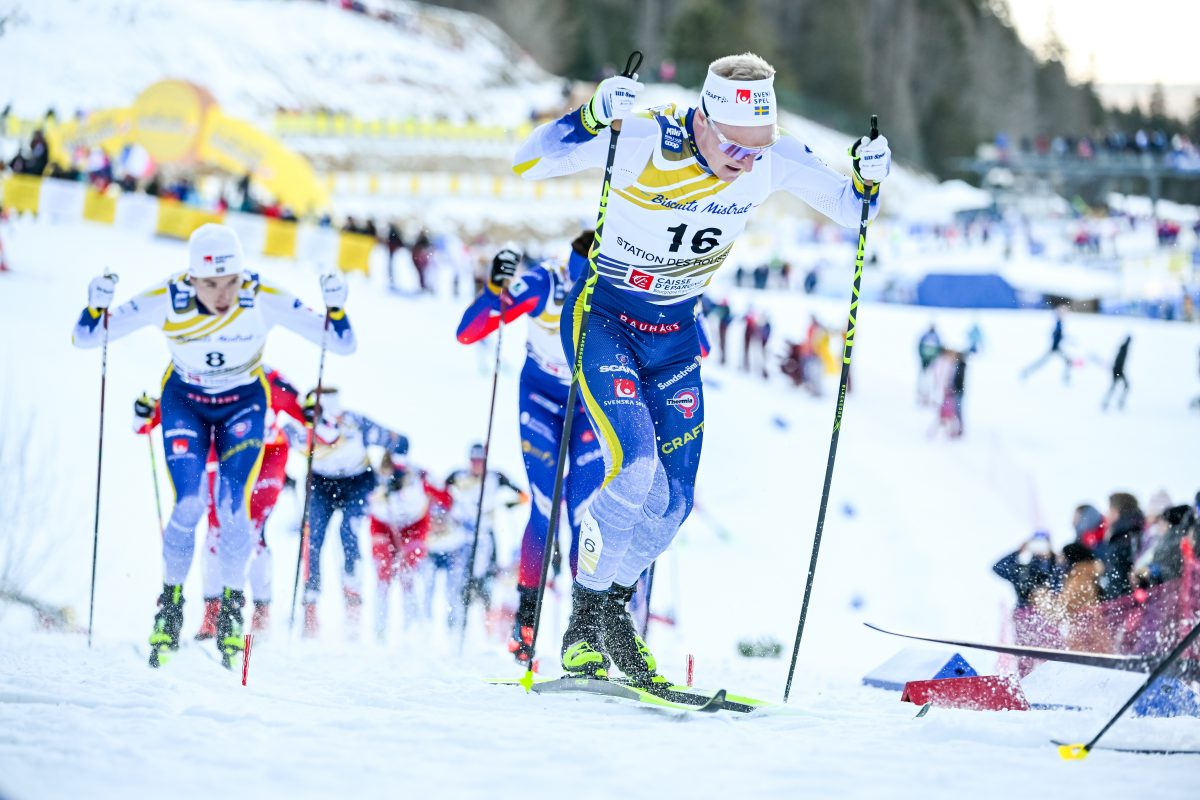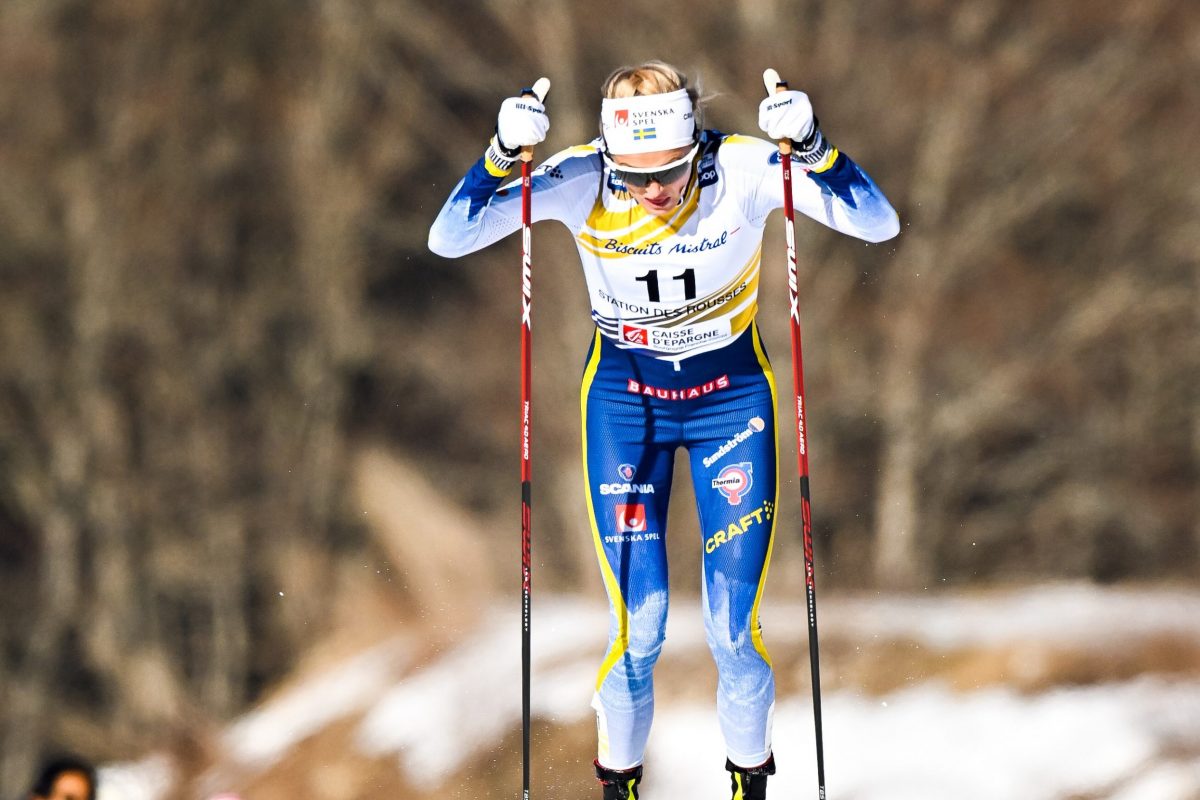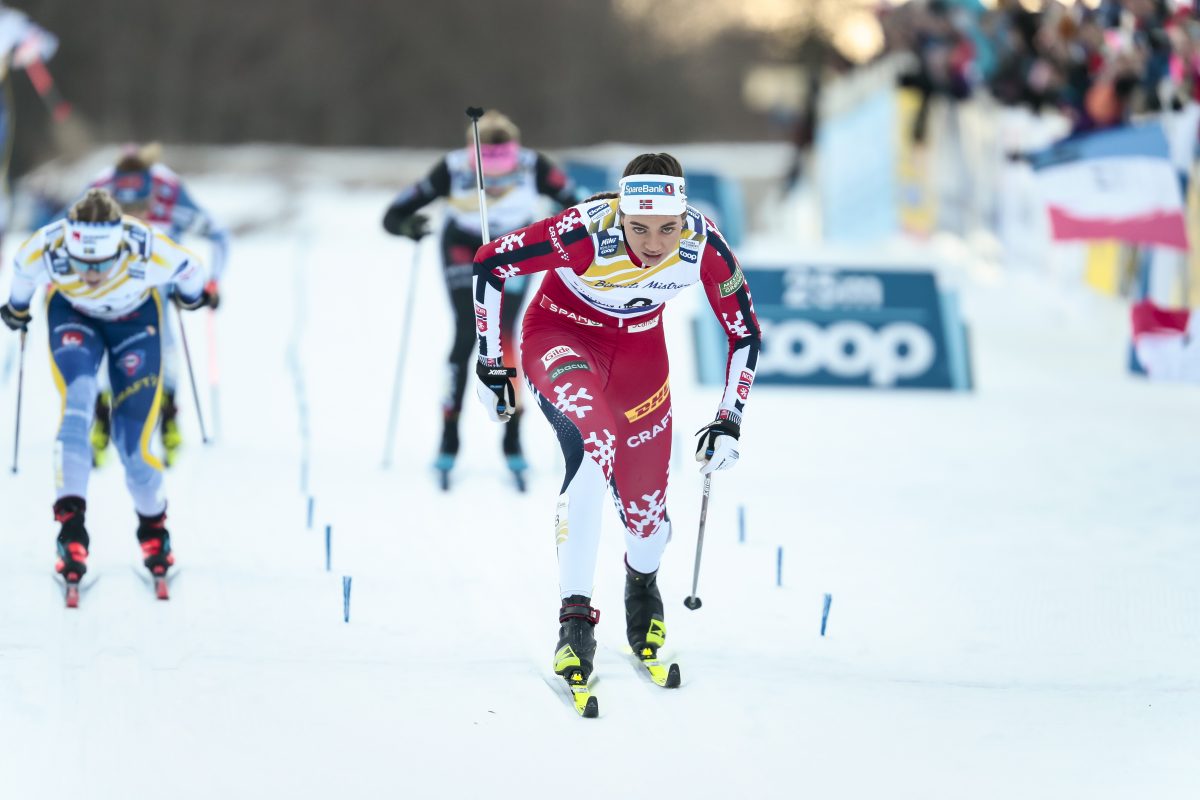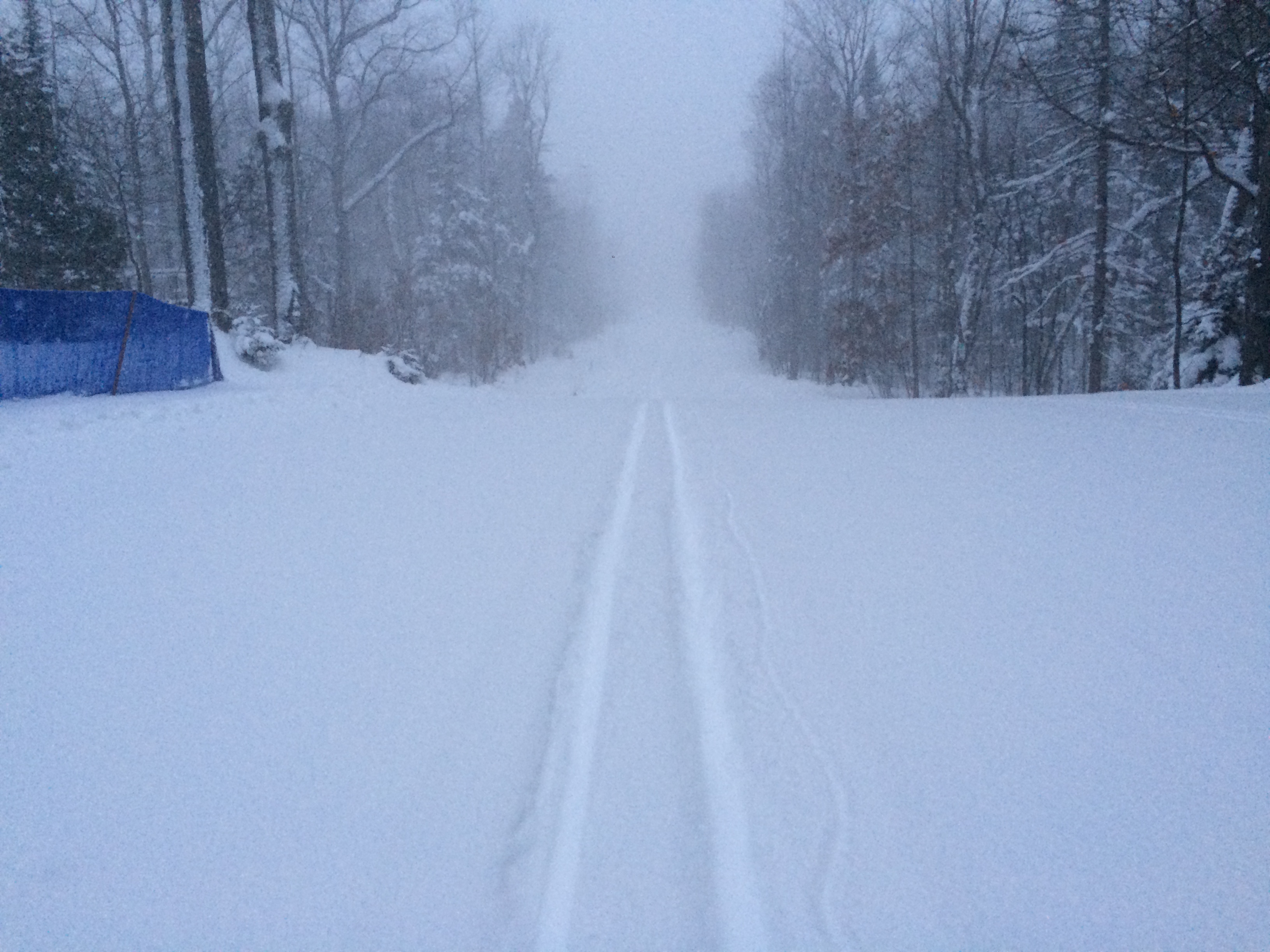
Schuss, schuss, schuss as you skate through the woods.
The occasional slap of your classic skis as you head up a climb.
Laughter as you chat with your training partner.
As cross-country skiers, we think of ourselves as fairly quiet out in nature: aside from the groomer, there’s little motorized traffic, no spewing exhaust, no chairlifts. In the grand scheme of sports, cross-country skiing is relatively low-impact, or at least that’s what trails are designed to make you think.
And it goes into the psychology of skiers, too. A team training session might be boisterous but most skiers also relish the solo days spent out on the trails, contemplating or working a problem through in their head, perhaps focusing on their technique, or simply admiring the natural world and beautiful views.
But is our impact on that natural world really so minimal? Not necessarily.
Poorly designed or sited trails can exacerbate erosion, for instance, while filling low-lying swampy areas affects natural hydrological patterns.
But research shows that even well-designed trails can have impacts on wildlife. This happens primarily through habitat fragmentation of interior forest, and when skiers encounter wildlife and trigger their flight reactions. Such disturbances can have dire consequences for animals living on the edge of their energetic requirements in a tough winter.
Additionally, climate change will cause increasing convergence between areas which are suitable for ski trails and habitat for native species.
Habitat Fragmentation
Where should new trail networks be built? As tempting as it might appear, probably not in pristine forest, according to bird researchers.
“My research found that the greatest richness and diversity of birds occurred in large areas of forest free of trails, which suggests that much like other effects of fragmentation, protecting birds from disturbance associated with trails can best be accomplished by setting aside large refuge areas,” Bill Thompson of the Lake Simcoe Region Conservation Authority outside of Toronto, Canada, wrote in an email.
Trails slicing through otherwise intact blocks of habitat cause what is referred to as “habitat fragmentation”. Fragmentation is also caused by cutting down forests, building houses and other development, and increasing agricultural intensity. Globally, habitat fragmentation is one of the leading causes of declining biodiversity.
Compared to building new towns or burning the rainforest, hiking and ski trails cause quite subtle fragmentation. Some species might not be affected at all, or might even do better where trails increase the amount of light reaching the forest floor or change the types of plants which are able to grow.
But other species clearly do suffer. In a study of summer-use recreational trails in his area published in Environmental Management, Thompson found that in areas with walking or biking trails there was a lower density and diversity of forest birds, particularly of those which nest or forage on the ground.
That’s in line with previous research. For instance, a 1998 study conducted in Boulder, Colo., found that in both forests and prairies, the types of birds found near trails were quite different than those found farther away. In particular, specialist species – those which require particular environmental conditions to succeed – were more rare near trails.
Birds which are specialized to interior forest need quiet, undisturbed habitat. They may need food that is specific to the deep forest. When that habitat is disrupted, for instance by a trail, power line or logging road, the birds move out.
“Research by the Wildlife Conservation Society in the Adirondacks has shown in the Science from the Field 2000-2010 Report that at least the 17 acres of forest surrounding a house and clearing become noisier, less sheltered, and vulnerable to invasion by domestic animals and nest predators and parasites,” Audubon Vermont wrote in a 2012 publication. “Interior forest conditions that are not impacted by fragmenting features do not occur until more than 200-300 feet away from the forest edge.”
As noted, trails can be highways for predators to access the forest, as well as for invasive species to arrive. Furthermore, in the Boulder study, bird nests near trails were more likely to be parasitized by brown-headed cowbirds, which lay their eggs in nests belonging to another species and leave those parents to raise the extra young. This can lead to higher death rates for the host birds because the cowbirds’ loud calls attract predators.
Thompson’s study showed that it wasn’t necessarily the intensity of trail use which disturbed birds in southern Ontario, but the presence of a trail itself.
“In my study sites there was a real range of public use levels and levels of popularity in trails, none of which appeared to influence my results,” he wrote in the email. “That suggests to me that it is the presence of the trail itself, rather than the presence of people which is the primary cause of disturbance. That could be a result of the localized loss of habitat, and associated loss of vegetation which acts as cover from predators and substrate to pick insects off, or that the compacted soil of the trail makes excavating for insects more difficult. I suspect part of the reason is that the major predators for songbirds in our area are mammals and snakes, which tend to use trails preferentially.”
Thompson suspected that the impacts of winter trails would be slightly less than those of summer trails. However, it’s important to note that most trails are used year-round.
A possible solution to the habitat fragmentation problem: setting up dense networks of trails, while leaving other tracts of land untouched.
“The important point is that neither the extent of trails, nor their density, had an impact, which suggests that a balance can be achieved between trail development and wildlife habitat,” he explained. “Trail designers have the option of either aligning trails along habitat edges as much as possible, or in identifying the most diverse and productive habitat within their natural area, and setting it aside as refuge habitat, focusing trail development on other, less ‘valuable’ habitat.”
Human Disturbance
Little work about habitat fragmentation by trail networks addressed winter-use trails. But plenty of work has been done about how skiers and other winter recreationalists disturb wildlife.
“The colder weather [increases] their energetic requirements,” Thompson wrote of his birds. “There has been a body of work which has observed that birds (even those foraging in the canopy) will stop foraging in the presence of trail users, presumably to ensure that they aren’t predators. During cold winters, some birds are living on very tight energetic margins, and need to consume a lot of food. Repeated disturbances in those situations could be extremely detrimental to winter survival.”
Other researchers have been focusing on how disturbance affects large mammals such as moose.
“I did some basic calculations for the animals involved in the experimental disturbances, but the real costs depend on many factors (terrain – movement uphill, downhill or plain), snow conditions (snow depth, wet/dry snow, icy snow, ice crust to walk on or not, …….),” wrote Wiebke Neumann, a moose researcher from Sweden.
She specifically studied the response of moose to cross-country skiers. Targeting the physiological response to disturbance, Neumann and her team found that moose startled by skiers moved faster for the next hour or so, roughly doubling their energetic requirements.
“In general we can say that winter is a period animals usually live on their energetic reserves – any extra movement depletes them more quickly,” Neumann wrote in an email. “Single disturbances may not cause any problem for healthy animals that are in good body conditions. Yet, disturbances that occur repeatedly are likely to have an impact or animals that are on the edge [such as young, old, or ill individuals] may suffer heavily.”
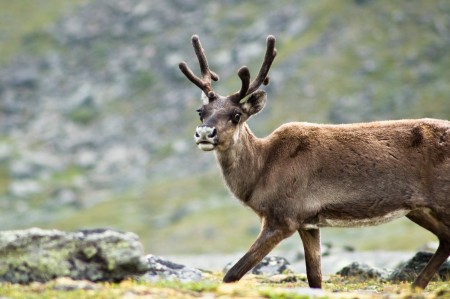
Research on reindeer in Norway found that animals startled by cross-country skiers moved away even farther than when startled by snowmobiles, perhaps because they could detect the snowmobiles from farther away while skiers arrived quietly and unexpectedly.
Meeting three cross-country skiers, the researchers calculated, would use 3.4 percent of a reindeer’s energy reserves for the day.
Researchers at the University of Bern in Switzerland found not only that black grouse flushed from their nests showed increased levels of the stress hormone corticosterone, but also that those living in areas with high levels of winter recreation — namely freeskiing — had chronically high levels of the hormones. The long-term impacts of such stress remains unstudied.
Ski lifts were particularly bad for the grouse, reducing their densities and changing their behavior. In a separate paper, the research team calculated that black grouse habitat had been reduced by 12 percent in their study area by ski resorts themselves, but by another 16 percent due to outside-the-bounds activities like backcountry and freeskiing.
Like Thompson, the team suggested using habitat models to identify areas of habitat which could be kept free of recreation.
“By identifying zones of potential conflict, while rating its relative intensity, our model provides a powerful tool to delineate and prioritize areas where wildlife winter refuges and visitor steering measures should be implemented,” they wrote.
For her part, Neumann said that the ecological impacts of skiing didn’t mean we should feel so guilty as to abandon the sport altogether. Along with considerate siting of new trail networks, she recommended using common sense when encountering animals on trail.
“Being aware of having an impact as well,” Neumann wrote. “Avoid areas where animals gather to feed or rest, and do not track animals. Keep a sound distance, no need for impressive selfies with wildlife, use binoculars instead and enjoy.”
Increased Conflict?
Finally, human/wildlife conflict around skiing is certain to increase in the future as warming temperatures and changing snow patterns push both skiers and wildlife into smaller and smaller areas of higher-elevation terrain.
Researchers at the University of Turin in Italy modeled how the two sets of requirements would converge under different climate scenarios, focusing on downhill rather than cross-country skiing. The paper, recently published in the Journal of Biogeography, was written by Mattia Brambilla; the senior author was Dan Chamberlain.
“What we do is we go into the field and we study animals [or plants] in their natural environment,” Chamberlain said in an interview. “I’ve personally done a lot of bird surveys in the mountains, particularly at different altitudes … you can basically predict statistically where a species is likely to be in relation to habitat, but also to climate. So you can say, in this area, at this elevation, with this habitat, this species has an 80 percent probability of being present.”
The team then fed their model into different climate predictions. Their finding: suitable bird habitat above treeline in the Alps will be reduced by over half with standard climate change predictions, and habitat which hosts the best diversity of species or the most threatened species will see substantial conflict with areas suitable for ski areas.
“There’s quite an overlap already,” Chamberlain noted. “Skiing is a very common activity, and there’s a lot of ski pistes which are at quite high altitude above the treeline. So there’s already conflict … the management of the trail has a negative effect on the habitat. Often the more grassy areas, areas with meadow, not too steep or with cliffs but not too flat either, those are often the areas that birds like.”
The mowing of alpine ski trails in winter, along with grading and filling to make the trails suitable to skiers of varying abilities, drastically changes the way that some birds would use such meadows for habitat, Chamberlain said.
Above treeline, cross-country ski trails would likely have less impact on bird habitat requirements. But as climate change proceeds new trail systems may be built in the remaining more-suitable areas for skiing, which could lead to more of the type of fragmentation identified by Thompson in tracts of forest.
“The message I want to get across is that these are some possible things that we should keep in mind,” Chamberlain said. “We can’t predict the future. We want to say, this might be an issue, what can we do about it? Maybe we identify some particularly important areas and put a moratorium on building ski pistes in these valuable areas. I’d like to see the information used for conservation planning… What we might be able to say is, what density of ski pistes could an area support? Or how many protected areas do we need and how big do they have to be?
“We’re not anti-skiing,” he concluded. “It’s one of the major incomes for mountain communities. What you’re looking for is a compromise, but you have to plan for it. So you need these things in order to try to develop skiing sustainably.”
- animals
- Bill Thompson
- birds
- black grouse
- conservation
- cowbirds
- Dan Chamberlain
- ecological impact
- environmental management
- habitat fragmentation
- interior forest
- moose
- moose population
- recreation
- reindeer
- research
- science
- trail construction
- trail impact
- trail management
- trail planning
- Wiebke Neumann
- wildlife
- wildlife population
Chelsea Little
Chelsea Little is FasterSkier's Editor-At-Large. A former racer at Ford Sayre, Dartmouth College and the Craftsbury Green Racing Project, she is a PhD candidate in aquatic ecology in the @Altermatt_lab at Eawag, the Swiss Federal Institute of Aquatic Science and Technology in Zurich, Switzerland. You can follow her on twitter @ChelskiLittle.

